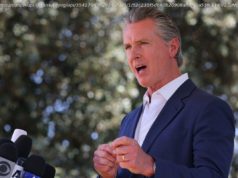«Taking all the relevant evidence together, a reasonable observer would conclude…»
Allison Shelley/Getty Images
President Donald Trump has made clear his disinterest in many norms of the American presidency since taking office, but perhaps none have been more apparent than his propensity for off-the-cuff tweeting.
The often raw and unfiltered messages sent out from the Trump White House strike a stark contrast with the more controlled and traditional messaging strategies used by previous administration’s. A Tuesday Supreme Court ruling on the president’s controversial travel ban made clear how this habit can be used against him.
While the opinion of the court went in favor of the administration in a 5-4 ruling, the dissent from Justice Sonia Sotomayor seized on Trump’s tweets to argue there was a clear racial animus fueling the proposed ban.
“Although the majority briefly recounts a few of the statements and background events that form the basis of plaintiffs’ constitutional challenge… that highly abridged account does not tell even half of the story,” Sotomayor wrote in her dissent, joined by Justice Ruth Bader Ginsburg.
“The full record paints a far more harrowing picture, from which a reasonable observer would readily conclude that the Proclamation was motivated by hostility and animus toward the Muslim faith.”
In addition to highlighting speeches and statements made by Trump at his campaign rallies, Sotomayor cites a number of tweets and retweets from the president since taking office.
Sotomayor includes tweets that focus directly on the travel ban, where Trump seemed to undercut the messaging from the White House press office and the Department of Justice:
And in June 2017, the President stated on Twitter that the Justice Department had submitted a “watered down, politically correct version» of the «original Travel Ban» «to S[upreme] C[ourt].”1 Id., at 132. The President went on to tweet: “People, the lawyers and the courts can call it whatever they want, but I am calling it what we need and what it is, a TRAVEL BAN!” Id., at 132–133. He added: “That’s right, we need a TRAVEL BAN for certain DANGEROUS countries, not some politically correct term that won’t help us protect our people!”
Study what General Pershing of the United States did to terrorists when caught. There was no more Radical Islamic Terror for 35 years!
— Donald J. Trump (@realDonaldTrump) August 17,2017
All of these tweets played a central part in Sotomayor’s opinion — that Trump’s travel ban was not motivated by concerns about national security but rather by a racial bias.
“Taking all the relevant evidence together, a reasonable observer would conclude that the proclamation was driven primarily by anti-Muslim animus, rather than by the government’s asserted national security justifications,” Sotomayor wrote.
Sotomayor’s opinion was not the opinion of the court. Writing for the majority, Chief Justice John Roberts found that “the government has set forth a sufficient national security justification to survive rational basis review.”
“We express no view on the soundness of the policy,” he wrote in an opinion joined by Justices Anthony Kennedy, Clarence Thomas, Samuel Alito, and Neil Gorsuch. “We simply hold today that plaintiffs have not demonstrated a likelihood of success on the merits of their constitutional claim.”
While Sotomayor’s argument may not have won today, her opinion still paints a clear picture of how Trump’s own tweets can be used to undermine his administration’s goals.






